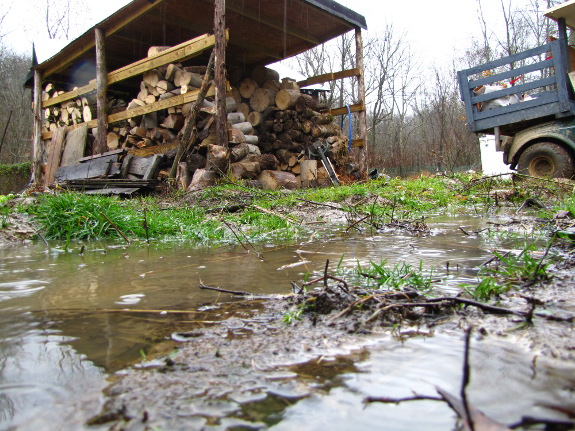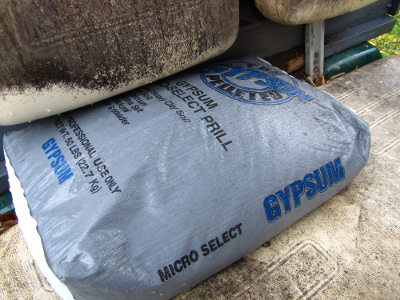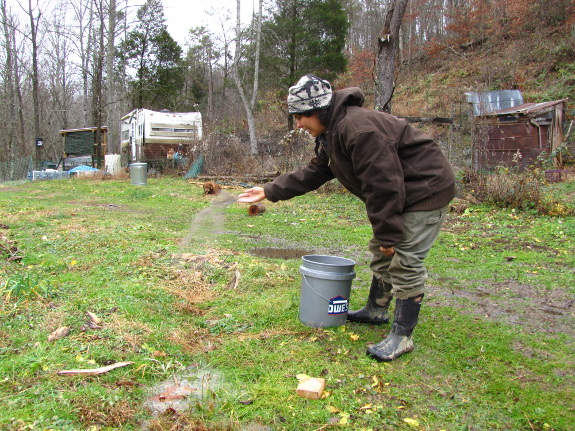
Gypsum application rates

One of the ideas I got
out of The
Holistic Orchard was
applying
gypsum to improve drainage in the heavy clay parts of our garden. As you can see from
the first photograph in this post, a day or two of rain in the winter
is all it takes to saturate our soil and create puddles here, there,
and everywhere. Gypsum is reputed to increase drainage and boost
calcium levels (which many people believe results in healthier, more
nutritious plants) without sweetening the soil, so I decided to give it
a try.
 When
amending soil, it's generally a good idea to perform a soil
test first, then
calculate how much of the amendment you really need. In many
cases, adding too much is worse than adding none at all, so I was leery
when one
of our readers recommended: "Be very liberal also. It
doesn't burn at all. Also you can used it often."
When
amending soil, it's generally a good idea to perform a soil
test first, then
calculate how much of the amendment you really need. In many
cases, adding too much is worse than adding none at all, so I was leery
when one
of our readers recommended: "Be very liberal also. It
doesn't burn at all. Also you can used it often."
However, a bit of
research proved him right. One of Clemson
University's soil scientists wrote, "There are no easily accessible
guidelines regarding the application rate of gypsum in a homeowner
situation. It is sparingly soluble and so it is nearly
impossible to over-apply."
I've seen recommendations as high as 2,000 pounds per acre, which is a lot
of gypsum.

In the end, I opted to
just sprinkle the pellets across wet soil the way I would if seeding a
cover crop, so the first fifty-pound bag covered perhaps a quarter of
the forest garden. The feed store has another 450 pounds waiting
for us, so we'll be spreading that slowly but surely as our car and
golf cart are up to the hauling. Most websites recommend
repeating the application annually for three years, at the end of
which, hopefully, our winter puddles will be less problematic.
Want more in-depth information? Browse through our books.
Or explore more posts by date or by subject.
About us: Anna Hess and Mark Hamilton spent over a decade living self-sufficiently in the mountains of Virginia before moving north to start over from scratch in the foothills of Ohio. They've experimented with permaculture, no-till gardening, trailersteading, home-based microbusinesses and much more, writing about their adventures in both blogs and books.
Want to be notified when new comments are posted on this page? Click on the RSS button after you add a comment to subscribe to the comment feed, or simply check the box beside "email replies to me" while writing your comment.

You can find application quantities here. For gardens it says
which is a heck of a lot. OTOH,
Other soil improvements to improve drainage and aeration are perlite or vermiculite.
Ha, I feel so privileged to be quoted on your site! Thanks
Mona, also a quick light raking just to give the ground some roughness after you sprinkle it if the ground is dry. It helps deal with a heavy rain that can wash it away on slopes.